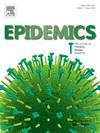艾滋病病毒自我检测对美国男男性行为者中艾滋病病毒感染率和对感染状况认识的影响:新颖分区模型的启示。
IF 2.4
3区 医学
Q2 INFECTIOUS DISEASES
引用次数: 0
摘要
背景:OraQuick 居家 HIV 自我检测是一种快速、廉价、方便的方法,用户可以通过它来评估自己的 HIV 感染状况。如果能将其与现有的检测方法周到地结合起来,并辅以高效的正规诊断途径,那么自我检测既能提高人们对艾滋病的认识,又能降低艾滋病的发病率。然而,与黄金标准的实验室检测相比,目前可用的自我检测灵敏度较低,尤其是对近期感染的检测。了解由自我检测取代部分标准检测的影响非常重要。我们使用了一个分室模型来评估 2020-2030 年期间在美国男同性恋、双性恋和其他男男性行为者(MSM)中不同情况下自我检测的影响,并了解哪种情况能最大限度地发挥自我检测的优势:方法:我们为 HIV 自我检测引入了一个新颖的四室模型。我们在不同的筛查率、自我检测比例以及通过自我检测发现者的诊断延迟条件下使用了该模型,以确定自我检测在应用于美国男男性行为人群时对 HIV 感染率和感染状况认知度的潜在影响。我们研究了自我检测作为实验室检测的补充(不存在替代)和存在一定替代的两种情况。我们还研究了未来自我检测灵敏度的提高会如何影响我们的结果:结果:如果艾滋病毒自我检测是实验室检测的补充而非替代,那么自我检测可在 10 年内将美国男男性行为者中的艾滋病毒发病率降低 10%,并将男男性行为者对自身状况的认知度从 85% 提高到 91%,前提是在自我检测呈阳性后(90 天或更短)及时联系医疗机构并进行正式诊断。由于自我检测取代了较高比例的实验室检测算法,因此有必要提高总体检测率,以确保降低艾滋病毒发病率。然而,这种所需的提高幅度相对较小(对于及时参与护理和中等程度的替代来说,低于 10%)。自我检测灵敏度的提高和/或检测期的缩短可能会进一步减少总体检测率的必要增长,增幅可达 40%:如果使用得当,自我检测可显著降低艾滋病的长期发病率,并提高人们对艾滋病状况的认识。要使自我检测的益处最大化,就必须确保自我检测能提高总体检测率,并在自我检测呈阳性后及时进行正式诊断和参与护理。未来自我检测灵敏度的提高和检测周期的缩短将进一步降低艾滋病毒的发病率,并降低用自我检测取代实验室检测的潜在风险。本文章由计算机程序翻译,如有差异,请以英文原文为准。
The effects of HIV self-testing on HIV incidence and awareness of status among men who have sex with men in the United States: Insights from a novel compartmental model
Background
The OraQuick In-Home HIV self-test represents a fast, inexpensive, and convenient method for users to assess their HIV status. If integrated thoughtfully into existing testing practices, accompanied by efficient pathways to formal diagnosis, self-testing could enhance both HIV awareness and reduce HIV incidence. However, currently available self-tests are less sensitive, particularly for recent infection, when compared to gold-standard laboratory tests. It is important to understand the impact if some portion of standard testing is replaced by self-tests. We used a compartmental model to evaluate the effects of self-testing in diverse scenarios among gay, bisexual and other men who have sex with men (MSM) in the United States for the period 2020–2030, and to understand which scenarios maximize the advantages of self-testing.
Methods
We introduced a novel 4-compartment model for HIV self-testing. We employed the model under different screening rates, self-test proportions, and delays to diagnosis for those identified through self-tests to determine the potential effects of self-testing on HIV incidence and awareness of status when applied to the US MSM population. We studied scenarios in which self-tests supplement laboratory-based tests, with no replacement, and scenarios in which some replacement occurs. We also examined how future improvements in self-test sensitivity may affect our results.
Results
When HIV self-tests are supplemental rather than substitutes for laboratory-based testing, self-testing can decrease HIV incidence among MSM in the US by up to 10 % and increase awareness of status among MSM from 85 % to 91 % over a 10-year period, provided linkage to care and formal diagnosis occur promptly following a positive self-test (90 days or less). As self-tests replace a higher percentage laboratory-based testing algorithms, increases in overall testing rates were necessary to ensure reductions in HIV incidence. However, such needed increases were relatively small (under 10 % for prompt engagement in care and moderate levels of replacement). Improvements in self-test sensitivity and/or decreases in the detection period may further reduce any necessary increases in overall testing by up to 40 %.
Conclusions
If properly utilized, self-testing can provide significant long-term reductions to HIV incidence and improve awareness of HIV status. Ensuring that self-testing increases overall testing and that formal diagnosis and engagement in care occur promptly following a positive self-test are necessary to maximize the benefits of self-testing. Future improvements in self-test sensitivity and reductions in the detection period would further reduce HIV incidence and the potential risks associated with replacing laboratory tests with self-tests.
求助全文
通过发布文献求助,成功后即可免费获取论文全文。
去求助
来源期刊

Epidemics
INFECTIOUS DISEASES-
CiteScore
6.00
自引率
7.90%
发文量
92
审稿时长
140 days
期刊介绍:
Epidemics publishes papers on infectious disease dynamics in the broadest sense. Its scope covers both within-host dynamics of infectious agents and dynamics at the population level, particularly the interaction between the two. Areas of emphasis include: spread, transmission, persistence, implications and population dynamics of infectious diseases; population and public health as well as policy aspects of control and prevention; dynamics at the individual level; interaction with the environment, ecology and evolution of infectious diseases, as well as population genetics of infectious agents.
 求助内容:
求助内容: 应助结果提醒方式:
应助结果提醒方式:


